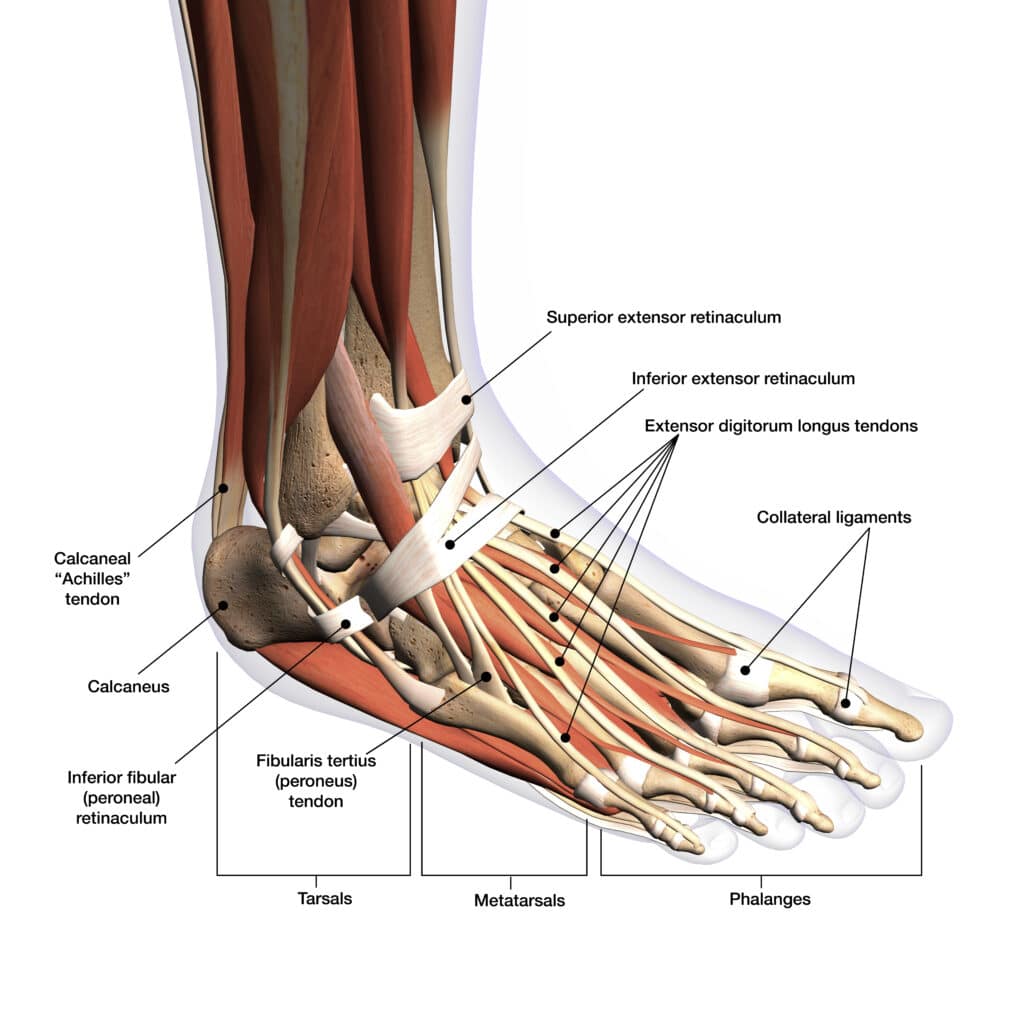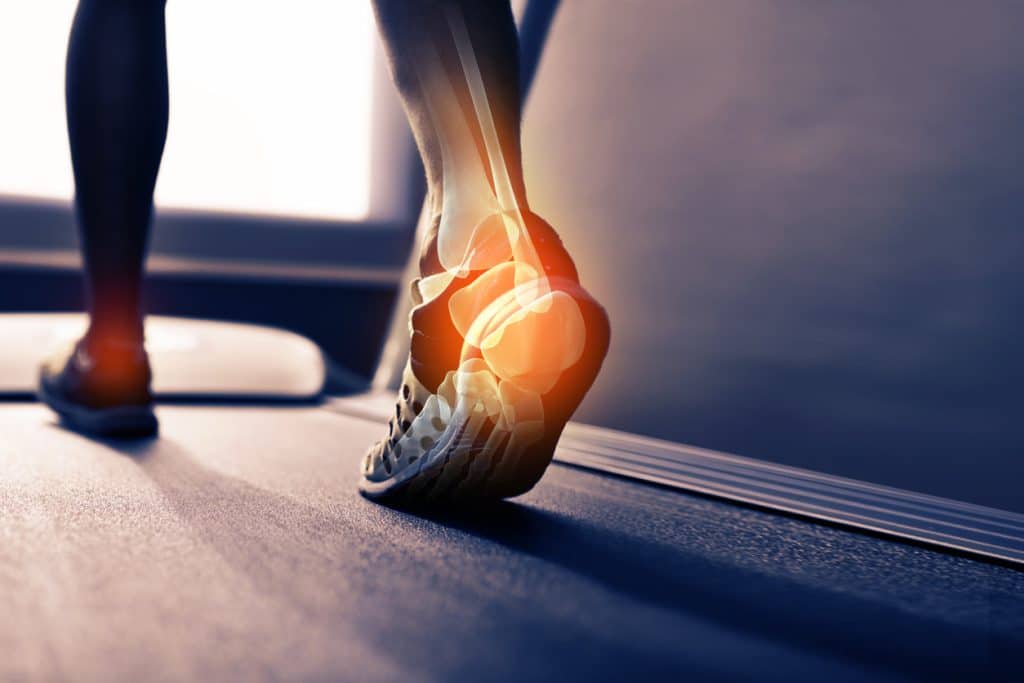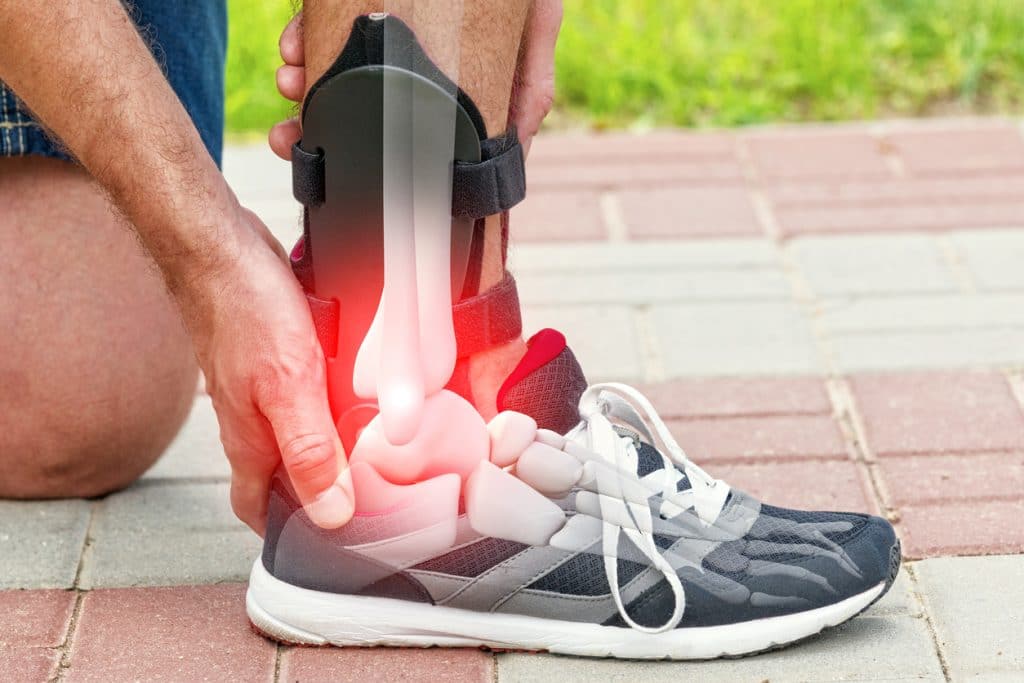Treating Ankle Tendonitis
Tendonitis is a common word, which makes it seem like a simple thing to treat. Its definition is straightforward: Tendonitis is inflammation (“-itis”) of tendons, the strong tissue bands that connect muscle to bone. Its treatment, however, isn’t something that should be glossed over.
While some tendonitis cases respond to consistent home treatment, others require surgery. Left untreated, tendonitis can evolve into more severe and long-term issues, including tendon rupture and loss of flexibility in the joint.
Ankle Tendon Anatomy

The tendons in the ankle stabilize and balance the foot and ankle. They protect from injury and allow the ankle joint to move as it should. Tendonitis can develop when ankle tendons work too hard, too long, or incorrectly, causing the tendons to develop tiny tears and inflammation.
Tendonitis is one of the most common causes of foot and ankle pain, largely due to the repetitive motions required by the ankle joint.
Just as several types of tendonitis affect various parts of the body — including the elbow, biceps, and wrist — several types of ankle tendonitis affect different parts of the ankle and foot.
Ankle Tendon Pain
Several fairly common types of tendonitis can affect the ankle and adjoining foot: Achilles, peroneal, flexor, extensor, and anterior/posterior tibial.
- Achilles tendonitis: Achilles tendonitis affects the heel or calf and is most noticeable when walking or running. The Achilles is the body’s largest tendon, and using it with every step makes this strong tendon vulnerable to wear and tear. The likelihood of Achilles tendonitis also increases if you’re upping your activity or training level, wearing new shoes, or have especially tight calf muscles.
- Peroneal tendonitis: You feel peroneal tendonitis on the outside of the ankle or heel. People with high arches or previous ankle sprains are more prone to this type of ankle tendonitis.
- Flexor tendonitis: Flexor tendonitis is felt on the big toe side of the back of the ankle. People performing activities that require them to balance on their toes (such as ballet dancers) are more prone to flexor tendonitis.
- Extensor tendonitis: This is a rarer type of tendonitis. It causes pain on the top of the foot—often from the excessive rubbing on one’s shoe due to high arches or generalized swelling from a medical issue.
- Anterior tibial tendonitis: Anterior tibial tendonitis causes pain on the front of your foot, and it’s often felt while going down hills or stairs.
- Posterior tibial tendonitis: The pain of posterior tibial tendonitis is typically felt on the inside of the ankle. It’s most common in people with flat feet.
What causes ankle tendonitis?

Overuse is the most common cause of all types of ankle tendonitis—the tendon gets stretched too far and pulls apart or tears. Just as tendonitis can happen over time as we increase our activity levels, it can also happen as a result of:
- Injuries like ankle sprains or foot sprains
- A sudden and powerful motion like jumping
- A medical condition like gout, osteoarthritis, or an infection
- Mechanical issues such as flat feet or high arches (these put additional pressure on tendons)
Who gets ankle tendonitis?
Certain groups are more prone to developing ankle tendonitis, including:
- People who play sports or do activities that require repetitive motion, such as running
- Those over age 40 (tendons weaken as part of the natural aging process)
- Men
- Overweight individuals
- People wearing improper or unsupportive footwear
- Those who’ve had prior ankle or foot injuries, including a broken ankle
- Individuals who don’t stretch before their sport or activity
- Smokers
Ankle Tendonitis Symptoms

Tendonitis is painful. It generally starts as a dull ache and worsens into sharp and intense pain over time. The injured area can become swollen, stiff, red, and warm. Symptoms are typically worse in the morning and worse with activity.
It can be difficult to wear shoes or lift onto your toes. Injured tendons may thicken, and you may develop a lump or nodule that moves with the tendon.
Tendonitis is diagnosed via physical exam. Your orthopedic ankle specialist looks for tenderness or weakness and evaluates your range of motion. Imaging, such as X-ray, MRI, CT scan, or ultrasound, determines whether you have any associated fractures, calcium deposits, cartilage damage, or ruptured or dislocated tendons. This comprehensive look ensures you receive proper treatment.
Ankle Tendonitis Treatment
Treatment depends on severity and can include the following:
- Resting your ankle
- Icing in 20-minute increments every couple of hours for the first 72 hours. Then alternate 20 minutes of heat, 20 minutes of cold, and 20 minutes of nothing as often as you like.
- Compressing your ankle with a gauze bandage, ACE bandage, Coban, or ankle brace. Compression should be snug but not tight.
- Elevating your ankle
- Pain-relieving non-steroidal anti-inflammatory drugs (NSAIDs)
- Steroid or platelet-rich plasma (PRP) injections
- Exercises for strength and flexibility (be gentle!)
- Orthotics or more supportive shoes
- A splint, brace, or soft cast
- Surgery

Recovery can be slow, generally requiring one to three months. It takes longer to heal without proper treatment or failing to follow your orthopedic doctor’s recommendations.
If you do not treat your ankle tendonitis at all, the tendon can rupture. The inflammation can also develop into ankle arthritis, further flattening of the feet, or a loss of mobility in your ankle.
Preventing Ankle Tendonitis
Given the disruption to your daily life and exercise routine that is required to heal, preventing ankle tendonitis is key. To properly care for the tendons of your feet and ankles:
- Increase activity levels over time
- Alternate activities that put pressure on joints
- Strengthen joints with exercises and consistency
- Maintain a healthy weight
- Don’t ignore foot or ankle pain
- Don’t smoke
- Allow rest between workouts
- Stretch prior to activity
- Wear proper shoes
- Use an ankle brace if you have previous injuries
- Ask about orthotics
If you have a question about a foot or ankle injury or want to talk to an orthopedic foot specialist about personalized recommendations to keep your muscles, joints, and tendons strong, please contact us. We’d love to help you stay active and healthy!
Leave a Reply